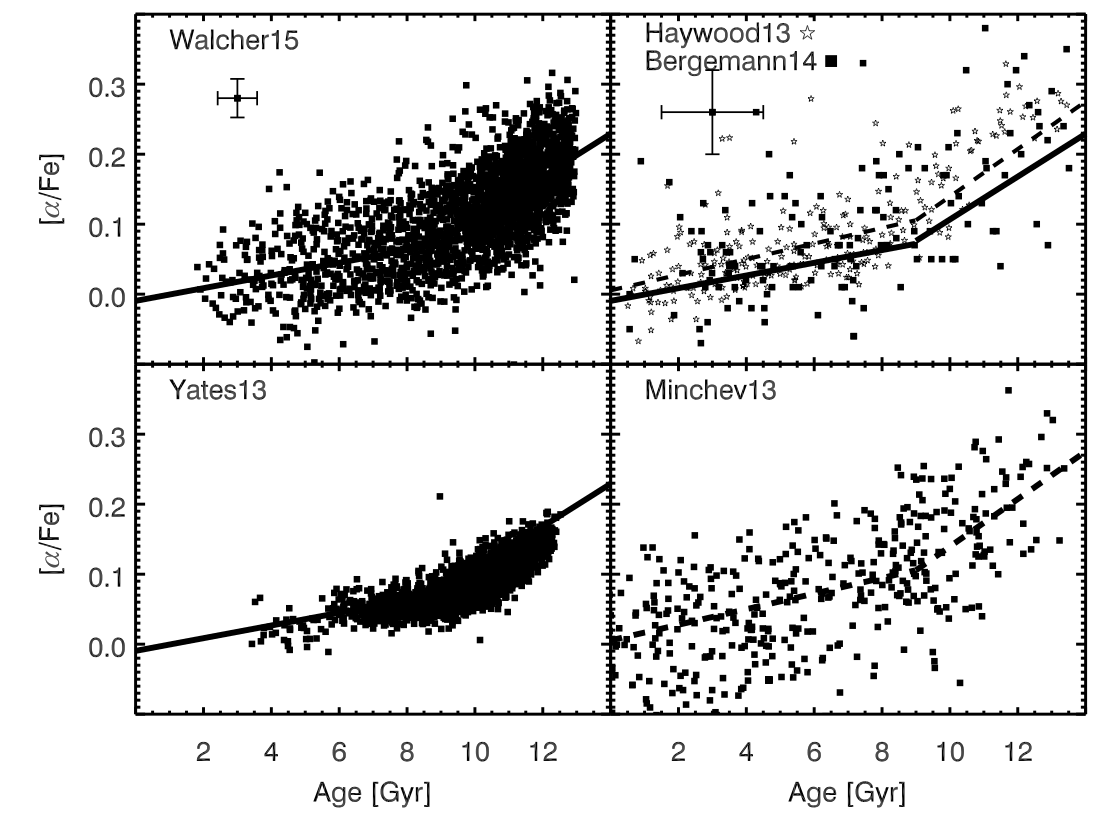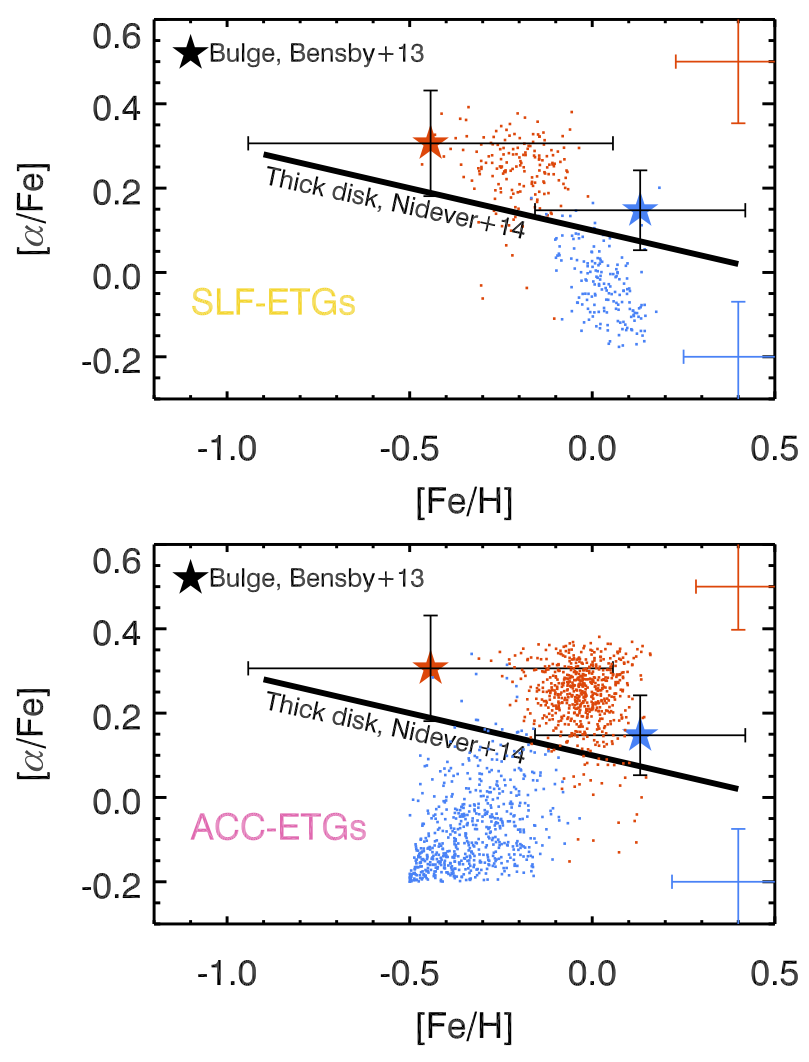Dr. C. Jakob Walcher
Science
My science interests in a nutshell:
- Galaxy evolution (chemical evolution, galaxy nuclei, galaxy kinematics)
- Stellar population models, SED fitting, element abundances
- Spectroscopic surveys (CALIFA, SAMI, 4MOST, WEAVE)
Chemical evolution

In Walcher et al. (2009) we developed a new stellar population model that at the time was the first one to be able to predict the variations of full galaxy spectra with age, [Fe/H] and [α/Fe]. We have now exploited these models to redetermine the ages, [Fe/H] and [α/Fe] abundances for a sample of early type galaxies from the SDSS. In Walcher et al. (2016) we find that there is a tight correlation between the age and [α/Fe], that had not been appreciated before due to lack of precision. This relation can be used to constrain the delay time distribution of SNe Ia. The best fit for our data is provided by a power law delay time distribution (Walcher et al., 2016).

In Walcher et al. (2015) we are also able to show that we can constrain the chemical properties of stellar populations of different age inside the galaxies sufficiently well to study the temporally resolved enrichment history. We find that the intermediate age stars in ETGs are not causally connected in a chemical evolution sense to the old stars. Rather, these intermediate age stars must have been mostly accreted from low-metallicity dwarf galaxies, in accordance with recent indications from entirely independent work.